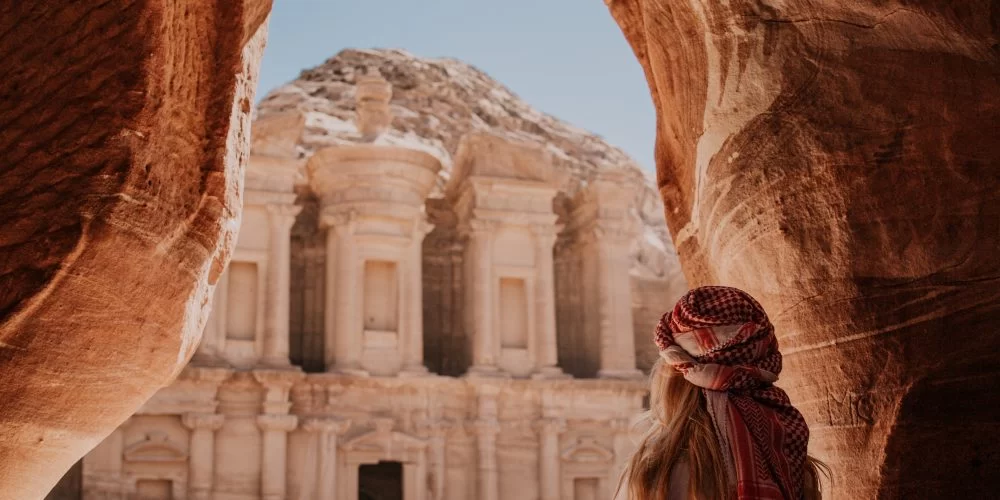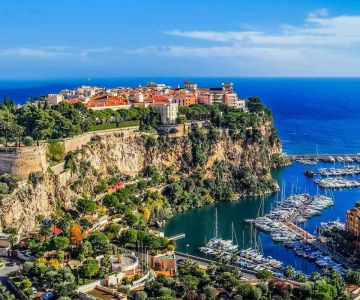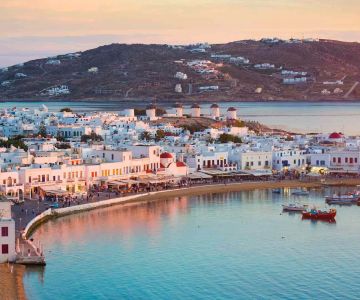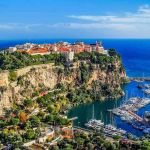
Discovering Petra in Jordan: An Ultimate Travel Guide for Adventurers
- Introduction to Petra
- History and Significance of Petra
- How to Visit Petra
- Must-See Sights in Petra
- Adventure Activities in Petra
- Local Experiences in Petra
- Plan Your Trip to Petra
1. Introduction to Petra
Petra, located in Jordan, is one of the world's most awe-inspiring ancient cities. Known as the "Rose City" for its striking red sandstone cliffs, Petra offers visitors a chance to step back in time and experience the marvels of the Nabataean civilization. This UNESCO World Heritage site draws travelers from all over the globe who come to witness its intricate rock-cut architecture, stunning landscapes, and rich history.
2. History and Significance of Petra
Petra was established in the 6th century BC and became a major trade hub for the Nabataean people. It thrived due to its strategic location along the caravan trade routes between Arabia, Egypt, and Syria. The city remained hidden for centuries before it was rediscovered in 1812 by Swiss explorer Johann Ludwig Burckhardt. Today, Petra is one of the New Seven Wonders of the World, attracting millions of visitors each year who are eager to learn about its fascinating past.
As you wander through Petra, you’ll encounter evidence of its rich history, from the impressive Treasury (Al-Khazneh) to the grand amphitheater, which can hold over 3,000 spectators. The city’s architectural wonders, including tombs, temples, and intricate water systems, showcase the ingenuity and resourcefulness of the ancient Nabataeans.
3. How to Visit Petra
Getting to Petra is relatively easy, as it is accessible from major cities like Amman, Jordan's capital. You can travel by car, bus, or even take a guided tour for a more personalized experience. Most visitors choose to stay in the nearby town of Wadi Musa, which is just a short drive from Petra's entrance.
The site is open every day, and it's advisable to visit early in the morning to avoid the crowds and fully appreciate the beauty of the ruins. While walking through Petra is a must, you can also rent horses or donkeys for a more comfortable experience, especially if you plan to explore the farthest parts of the city.
4. Must-See Sights in Petra
No trip to Petra is complete without seeing its iconic landmarks. The Treasury (Al-Khazneh) is the most famous, a towering facade carved into the rock face. The Siq, a narrow, winding gorge, serves as the main entrance and sets the stage for your first breathtaking view of the Treasury.
Another must-see is the Monastery (Ad-Deir), which is even larger than the Treasury and offers panoramic views of the surrounding landscape. For those interested in history, the Royal Tombs and the Petra Archaeological Museum are not to be missed. You can also hike up to the High Place of Sacrifice for stunning views of the entire site.
5. Adventure Activities in Petra
For adventure lovers, Petra offers a variety of activities beyond sightseeing. Hiking is one of the best ways to explore the site, with trails leading to hidden corners and lesser-known tombs. One of the most popular hikes is the climb to the Monastery, which rewards you with magnificent views and a sense of accomplishment.
If you're feeling adventurous, you can also try camel or horseback riding through the desert, allowing you to experience Petra from a unique perspective. For an unforgettable experience, consider taking a night tour of Petra, where the ancient city is illuminated by thousands of candles, creating a magical atmosphere.
6. Local Experiences in Petra
To truly immerse yourself in the culture of Petra, take some time to interact with the local Bedouins. These friendly, welcoming people are the custodians of Petra and offer a unique perspective on the area's history and traditions. You can enjoy a traditional Bedouin meal, try your hand at their crafts, or even join in a storytelling session around a campfire under the stars.
Visiting the local market is another great way to experience Petra’s vibrant culture. Here, you can purchase handmade jewelry, textiles, and other local crafts, perfect souvenirs to remember your journey.
7. Plan Your Trip to Petra
If you’re planning a trip to Petra, it’s important to research the best times to visit. The spring and fall months (March to May and September to November) offer mild weather, perfect for outdoor activities like hiking and exploring. Summer can be quite hot, so it's best to visit during the cooler months for a more comfortable experience.
When booking your trip, consider taking a guided tour for an enriched experience. Guided tours can offer deeper insights into Petra's history, architecture, and culture, and allow you to see all the best sights without missing anything. To plan your ideal Petra journey, visit Travel Clans for personalized travel options and expert advice.







 Coney Island Boardwalk Garden4.0 (75 reviews)
Coney Island Boardwalk Garden4.0 (75 reviews) The William Hotel Midtown, Sonder4.0 (555 reviews)
The William Hotel Midtown, Sonder4.0 (555 reviews) Shepard Lake Recreation Area0.0 (0 reviews)
Shepard Lake Recreation Area0.0 (0 reviews) Stairway To Heaven4.0 (185 reviews)
Stairway To Heaven4.0 (185 reviews) Howard Bennett Playground4.0 (152 reviews)
Howard Bennett Playground4.0 (152 reviews) Isle of Meadows4.0 (10 reviews)
Isle of Meadows4.0 (10 reviews) Top Group Travel Destinations in Europe: Best Places for Group Vacations
Top Group Travel Destinations in Europe: Best Places for Group Vacations Best Travel Clans for Sustainable Travel
Best Travel Clans for Sustainable Travel How to Get Involved in Travel Clans for Social Travel: Explore Group Travel Opportunities
How to Get Involved in Travel Clans for Social Travel: Explore Group Travel Opportunities Best Group Vacation Destinations for Friends: Ultimate Travel Ideas
Best Group Vacation Destinations for Friends: Ultimate Travel Ideas Travel Clans for Solo Travelers Looking for Company: Join Unique Travel Communities
Travel Clans for Solo Travelers Looking for Company: Join Unique Travel Communities Best Travel Clans for Women Traveling Together
Best Travel Clans for Women Traveling Together